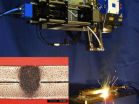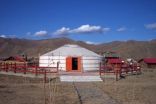(Press-News.org) Even healthy children as young as nine-years-old can start to show an increased risk of future heart problems if they are physically inactive, according to a study in the May issue of Acta Paediatrica.
A team of researchers from Sweden and Denmark studied 223 children – 123 boys and 100 girls – with an average age of 9.8 years, assessing their physical activity levels over four days.
They found that the children who were more physically active had a lower composite risk factor score for cardiovascular disease (CVD) than the children with lower amounts of moderate to vigorous physical activity and vigorous physical activity.
"It is well known that physical inactivity in adults is associated with a wide range of diseases and all causes of death" says lead author Dr Tina Tanha from the Department of Clinical Sciences at Skane University Hospital in Malmo, Sweden.
"We believe that our study now demonstrates a clear clinical association between physical inactivity and multiple CVD risk factors in children. It reveals that up to 11 per cent of the variance in composite CVD risk factor scores in the children could be explained by differences in their physical activity."
The children wore an accelerometer strapped to an elastic waist belt for four consecutive days to measure physical activity levels, using parameters set by two large accelerometer studies. Children were only included in the study if they wore the belt for a minimum of eight hours a day for three days. They also underwent tests for various CVD risk factors, including blood pressure, resting heart rate, fitness and body fat.
Key findings included:
The children's average body mass index was 17.5 for the girls and 17.4 for the boys.
The boys were significantly more physically active than the girls, with higher levels of general physical activity (746 mean counts per minute versus 620), moderate to vigorous physical activity (45 minutes versus 35 minutes) and vigorous physical activity (15 minutes versus 11 minutes).
There were no significant differences between the genders when it came to systolic and diastolic blood pressure, mean arterial pressure and pulse pressure. However the resting heart rate was significantly higher in the girls (85 versus 80 beats per minute).
The boys had lower total body fat mass than the girls (6.3kg versus 8.3kg) and lower percentage body fat (16.2 per cent versus 22.6 per cent), but a higher peak oxygen uptake (41.7mL/min/kg versus 35.7).
Vigorous physical activity accounted for ten per cent of the variance in the accumulated cardiac risk scores and moderate to vigorous physical activity accounted for eight per cent of the variance. The results were similar for boys and girls.
But there was a difference when it came to general physical activity. This accounted for 11 per cent of the variance in the boys, but showed no significant variance in the girls.
"Previous research into CVD risk factors in children have focused on quite specific single risk factors, but our study covers multiple risk factors" explains Dr Tanha.
"Our results show a significant association between low levels of activity and high composite risk factors for CVD, even in young children. Much of the association was driven by body fat measurements and oxygen intake.
"This is important because the accumulation of these risk factors, if started in early childhood and sustained over a long period, is believed to have greater impact on CVD and mortality than one single risk factor."
###
The article can be read free online at: http://onlinelibrary.wiley.com/doi/10.1111/j.1651-2227.2011.02226.x/pdf
Notes to editors
Lack of physical activity in young children is related to a higher composite risk factor score for cardiovascular disease. Tanha et al. Acta Paediatrica. 100, pp717-721. (May 2011). DOI: 10.1111/j.1651-2227.2011.02226.x
Acta Paediatrica is a peer-reviewed monthly journal at the forefront of international paediatric research. It covers both clinical and experimental research in all areas of paediatrics including: neonatal medicine, developmental medicine, adolescent medicine, child health and environment, psychosomatic paediatrics and child health in developing countries. http://wileyonlinelibrary.com/journal/APA
Wiley-Blackwell is the international scientific, technical, medical, and scholarly publishing business of John Wiley & Sons, with strengths in every major academic and professional field and partnerships with many of the world's leading societies. Wiley-Blackwell publishes nearly 1,500 peer-reviewed journals and 1,500+ new books annually in print and online, as well as databases, major reference works and laboratory protocols. For more information, please visit www.wileyblackwell.com or our new online platform, Wiley Online Library (wileyonlinelibrary.com), one of the world's most extensive multidisciplinary collections of online resources, covering life, health, social and physical sciences, and humanities.
Lack of exercise linked to higher heart disease risk in healthy children as young as 9
2011-05-13
ELSE PRESS RELEASES FROM THIS DATE:
New X-ray method for understanding brain disorders better
2011-05-13
Researchers including members from the Niels Bohr Institute at the University of Copenhagen have developed a new method for making detailed X-ray images of brain cells. The method, called SAXS-CT, can map the myelin sheaths of nerve cells, which are important for conditions such as multiple sclerosis and Alzheimer's disease. The results have been published in the scientific journal, NeuroImage.
The myelin sheaths of nerve cells are lamellar membranes surrounding the neuronal axons. The myelin layers are important to the central nervous system as they ensure the rapid ...
Sharing musical instruments means sharing germs
2011-05-13
BOSTON (May 12, 2011) — Germs survive for several days in wind instruments including the clarinet, flute, and saxophone, according to a pilot study published in the International Journal of Environmental Health Research. The researchers, led by Stuart Levy, MD, of Tufts University School of Medicine, urge proper cleaning of these instruments. The data suggest a need for additional research to determine the conditions for survival of germs on shared musical instruments, especially those with wooden reeds.
"Thousands of children share musical instruments in elementary ...
Study: Most at-risk patients don't adhere to statin treatment, despite real benefits
2011-05-13
A new study from North Carolina State University shows that the vast majority of patients at high risk for heart disease or stroke do a poor job of taking statins as prescribed. That's especially unfortunate, because the same study shows that taking statins can significantly increase the quality and length of those patients' lives.
"We found that only 48 percent of patients who have been prescribed statins are taking their prescribed dose on a regular basis after one year – and that number dips to approximately 27 percent after 10 years," says Jennifer Mason, a Ph.D. ...
Movement without muscles
2011-05-13
This release is available in German.
All animals move – cheetahs faster, snails more slowly. Muscle contractions are the basis of all movements, at least according to general opinion. But there are animal groups, that don't have any muscles at all, as they branched off from the evolutionary path before muscle cells evolved. However these animal groups, for instance the sea sponges, are not immovable. Sponges are able to contract without muscles. These contractions were already known to sponge divers in ancient Greece, as Aristotele described in 350 BC.
A group of ...
Reining in nicotine use
2011-05-13
A person's vulnerability to nicotine addiction appears to have a genetic basis, at least in part. A region in the midbrain called the habenula (from Latin: small reins) plays a key role in this process, as Dr. Inés Ibañez-Tallon and her team from the Max Delbrück Center for Molecular Medicine (MDC) Berlin-Buch, Germany, have now shown. They also shed light on the mechanism that underlies addiction to nicotine (Neuron, May,12, 2011, Vol. 70, Issue 3, pp: 522-535; DOI 10.1016/j.neuron.2011.04.013)*.
According to the World Health Organization WHO in Geneva, it is estimated ...
Eucalyptus tree genome deciphered
2011-05-13
The key to the survival of forestry in South Africa as well as many new possibilities for renewable bioproducts like biofuels and biopolymers may now be available with the click of a mouse.
This follows on a team of international researchers, led by Prof Zander Myburg from the Department of Genetics and the Forestry and Agricultural Biotechnology Institute (FABI) at the University of Pretoria (UP) – in collaboration with the US Department of Energy (DOE) Joint Genome Institute (JGI) – making available the complete genome sequence of the forest tree species, Eucalyptus ...
Shaking down frozen helium: In a 'supersolid' state, it has liquid-like characteristics
2011-05-13
ITHACA, N.Y. – In a four-decade, Holy Grail-like quest to fully understand what it means to be in a "supersolid" state, physicists have found that supersolid isn't always super solid. In other words, this exotic state of frozen helium appears to have liquid-like properties, says a new paper published in the journal Science (May 13, 2011).
Why is this important? Understanding supersolid helium brings us closer to understanding its close cousins superconductivity and superfluidity.
Physicists had long thought that the unusual behavior of torsion oscillators containing ...
Perfect welds for car bodies
2011-05-13
This release is available in German.
As if controlled by an invisible hand, the welding head on the robot's arm races along the sheet metal parts. Where the laser hits, sparks fly and the metal glows red hot. The process lasts just a few seconds. The outer door panel and the door frame are now welded together perfectly. A thin weld seam extends along the join, but it can only be seen on one side. From the other side of the welded car door the join is invisible. This is a perfect weld – the kind every car manufacturer dreams of, because it could be used anywhere on the ...
Water for Mongolia
2011-05-13
This release is available in German.
Mongolia is a country of contrasts – in summer boiling hot, in winter freezing cold; in the north damp, in the south bone dry. One million of its three million inhabitants live tightly packed together in the capital Ulaanbaatar, while the rest of the huge country is largely populated by nomads and their cattle. Providing a clean supply of drinking water across the entire country is a difficult challenge – beginning with the need to lay freeze-proof water pipes over an area of 1.5 million square kilometers. The people in the countryside ...
CAMH researcher discovers new gene that causes intellectual disability
2011-05-13
May 13, 2010 – (Toronto) – A new study involving Canada's Centre for Addiction and Mental Health (CAMH) has found a gene connected with a type of intellectual disability called Joubert syndrome.
CAMH Senior Scientist Dr. John Vincent has identified this gene that, when defective, leads to Joubert syndrome. This research is published in the 13 May 2011 issue of Cell.
This international study combined Dr. Vincent's gene mapping of a family with Joubert syndrome, with the use of a protein network map established by researchers at Genentech Inc., Stanford University and ...



